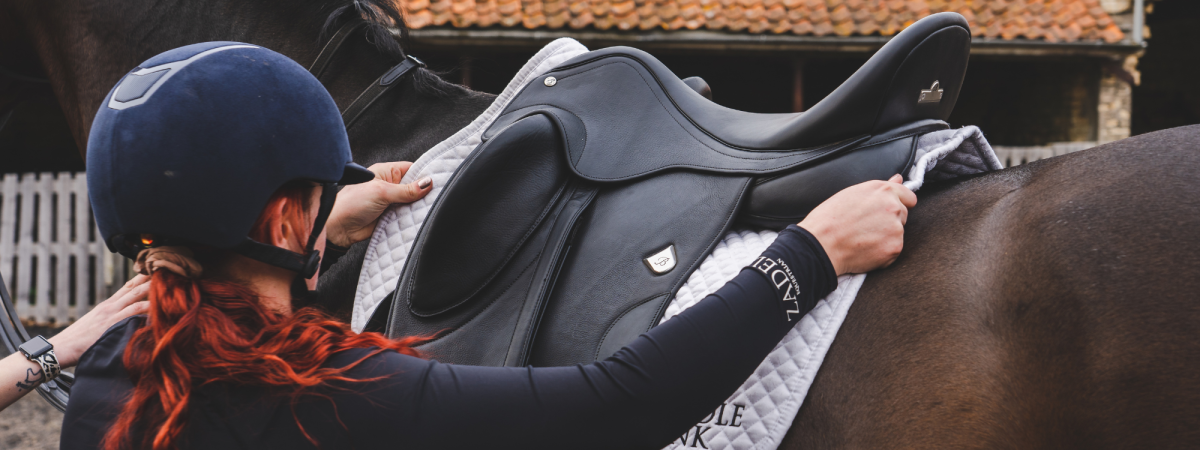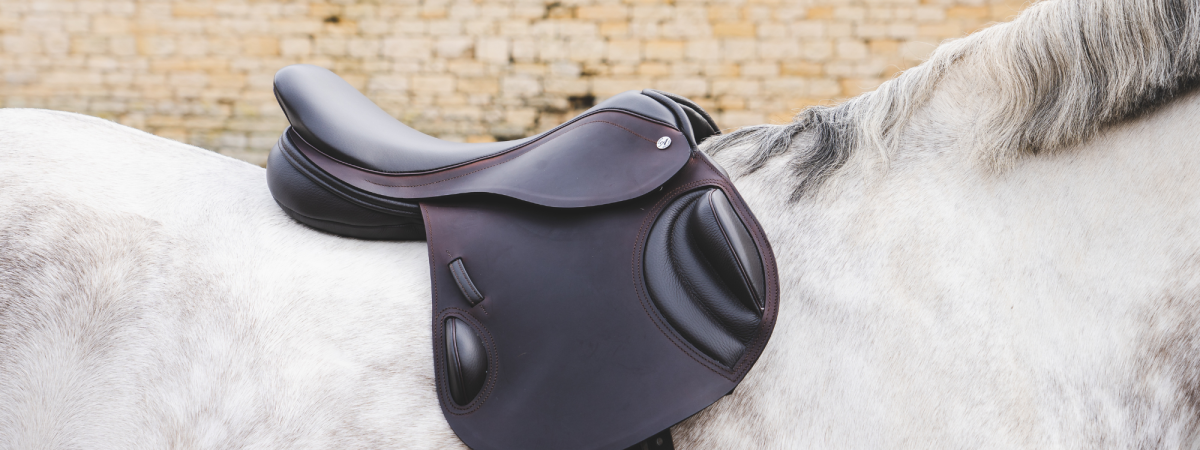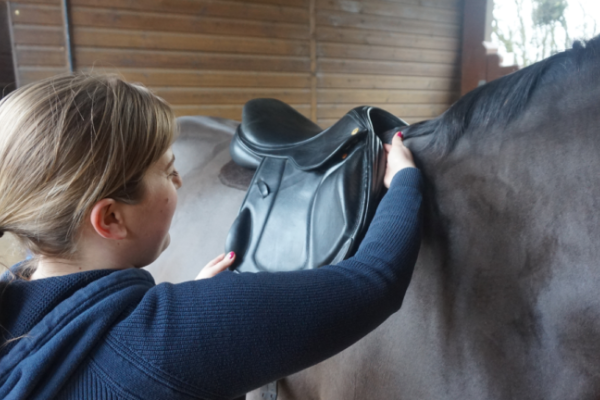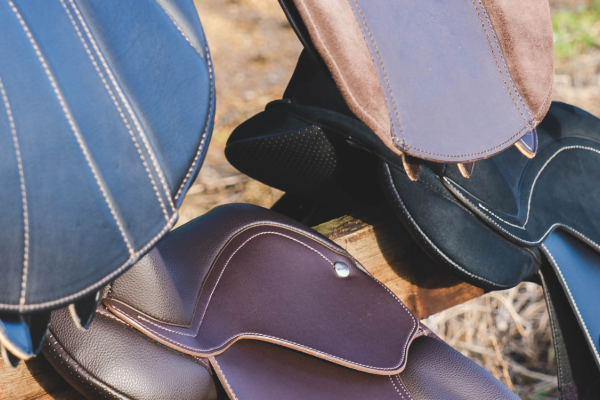Why is my saddle pad slipping backwards?
Why is my saddle pad slipping backwards?
Ok so picture this, you are riding, stress free and having a great time, then you look down and your saddle pad is slipping back. Firstly, you may mutter something under your breath (we won’t give examples). Then, secondly, you get off, re-adjust the saddle, struggle to get back on and then carry on in a huff. Today we are going through the reasons with you on why the saddle pad slips back.
It really is so important to pay attention to every single detail when riding. Whether you are doing it leisurely or professionally. Details can make the difference between clear rounds and eliminations.
If by the end of the article you are not sure if your current saddle is right for you and your horse, why not get in touch with our friendly customer support team via phone 01733 301 488 or email [email protected]. Our lovely team are always happy to help as much as they can and provide you with the information you need to make the best decision for you and your horse.

Numnahs and saddle pads
What are they used for?
Saddle pads are designed to prevent your saddle from getting sweat, grease and dirt on it. Your horse carries a lot of dirt and grease in its coat, and as the horse sweats when you ride them, this combines and sticks to your saddle. Therefore, a saddle pad helps to keep your saddle clean.
Which shape do you need?
There are a variety of different shapes and types of saddle pad available on the market suited to different disciplines. Typically a dressage saddle pad will be squarer and more straight cut. Whereas the jump saddle pad will be more forward cut to accommodate the shape of the saddle.
It is also really important when looking at the shape of the saddle pad to get one which has some 'shape' to it. By that, we mean that it is not a square. Your horse is not a square shape. They have withers and curves and it is really important that the saddle pad is the correct shape for your horse. If your horse has fairly high withers, it is vital that you also buy high wither specific saddle pads to ensure sufficient clearance over the withers.
Does the thickness of the saddle pad matter?
It is also really important to consider the thickness of the pad you are using as some pads will alter the fit of your saddle. When your saddle fitter comes to check your saddle they should assess the fit of the saddle directly onto the horses back. When they are happy with this, they will then see it ridden using a thin saddle cloth. Ideally, you should only need a thin saddle cloth. Some riders feel that using extra pads such as sheepskin half pads will offer the horse extra comfort. However, if the saddle fits well without it, its like putting on a thick pair of woolly socks whilst wearing your most comfortable pair of high heels. They would feel really tight. You should only use additional pads under the advice of your saddle fitter for remedial purposes. Learn more about that here.
Saddle Pad Fitting Check
- Check you have the correct design of saddle pad for your horse (GP/Dressage/Jump)
- Check the shape is correct for your horse - does it provide enough wither clearance, does the black flick up or is it straight as this could rub your horses back.
- Use the D ring attachments to attach the saddle pad to your saddle
- When placing the saddle on top of the saddle pad, ensure the saddle pad is pulled right up into the channel of the saddle and the front and rear to avoid pressure points.
It is vital to check when riding that the pad does not slip down onto the withers, as a saddle pad that sits too tight on your horses back is just as bad as a poorly fitted saddle and this can cut off blood flow, causing white hairs to appear. - When the saddle is in the correct place on your horses back, place your hand on the pommel of the saddle, and push some weight onto it. If the saddle lifts at the back it is likely your saddle is too wide. Using a saddle which is too wide will naturally cause your saddle pad to slip backwards along with your saddle. However it may be more obvious that the pad has slipped.
- When your saddle is girthed up, look at is straight on from the side view - does the saddle look level, or does it look like it will tip the rider backwards or forwards?
- If the saddle fit is correct, you could try using an anti slip pad.

So..why is my saddle pad slipping back?
Here are some general rulings about your saddle pad and why it may be slipping. The most likely reason is that your horses saddle isn’t fitting correctly. If it is too wide in front it could cause the saddle and the pad to slip backwards. You might need a narrower gullet bar or maybe your saddle needs re-flocking. These are simple adjustments your saddle fitter can make. Saddle pads may also slip backwards in horses with big movement or wide shoulders. However, it is vital to ensure the saddle pad stays up off your horses back throughout your ride. If it comes down over the withers really tightly, this can cause just as many problems as a poor fitting saddle.
Horses constantly change shape with the different seasons and changes in their workload. Therefore, it is vital to ensure that your horse has their saddle fit checked regularly (at least every 6 months).
If the saddle width is correct for your horse and the fit of the saddle looks good, check your girth is tight enough. If your girth is too loose this will cause the saddle and pad to move.
Once you have had your saddle fit checked to prevent your numnah slipping back when you ride, you could look at an anti-slip pad and putting this in-between your saddle pad and your saddle. These anti-slip pads are perfect because they are very thin in material which means they do not interfere with the fitting of the saddle.
They are very affordable too. You can also get saddle pads with anti-slip surface on the other side of them, which lies against the horse’s skin. This is another very effective way of stopping your saddle pad slipping back.
If your saddle is slipping sideways check out this blog here.
There's a bit of trial and error involved with this, but once you have found the method to suit you your away!
Here at The Saddle Bank we wouldn’t recommend adding anything without a saddle fitter’s advice.












